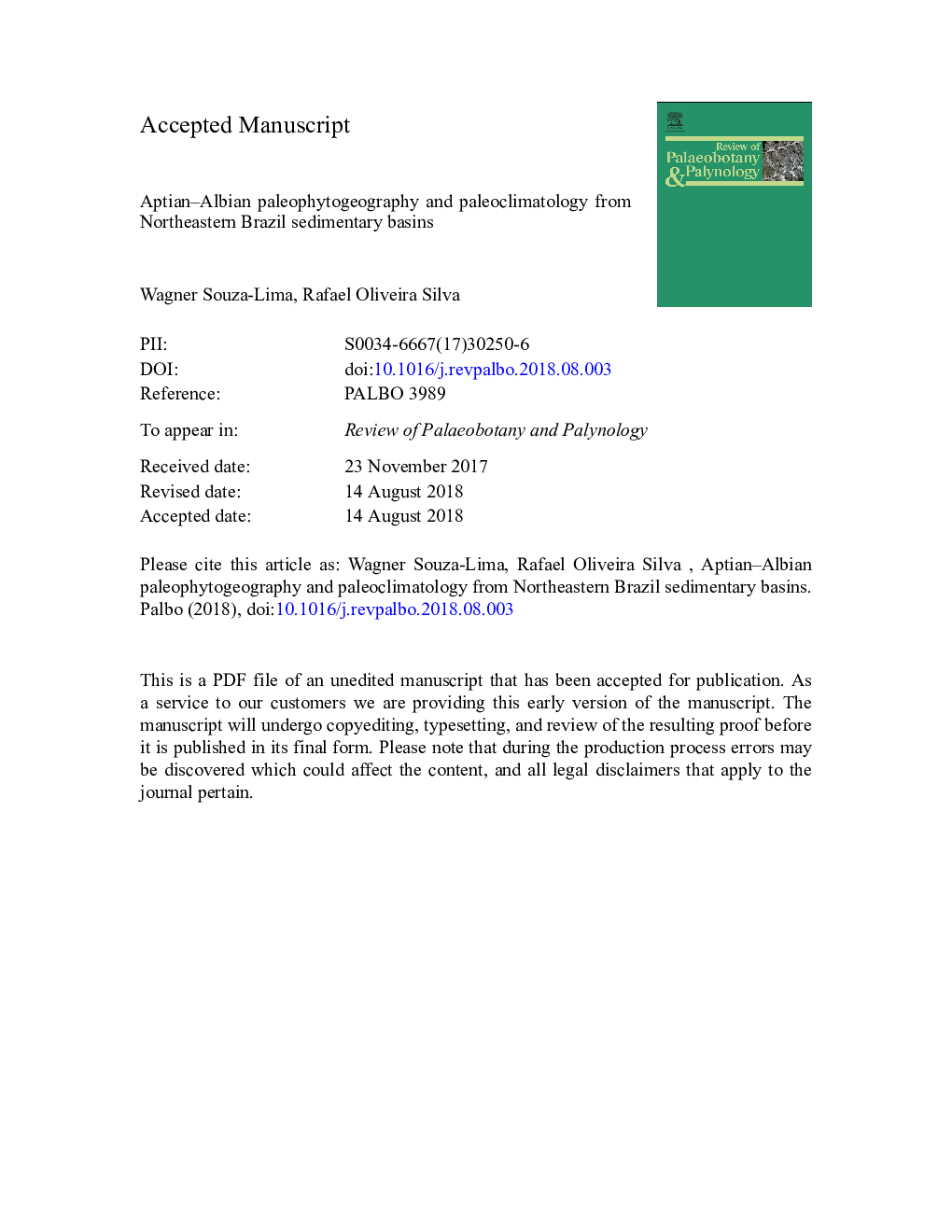| Article ID | Journal | Published Year | Pages | File Type |
|---|---|---|---|---|
| 11033027 | Review of Palaeobotany and Palynology | 2018 | 108 Pages |
Abstract
The eastern, equatorial and interior basins from Northeastern Brazil contain a diverse sedimentary record representative of the events that culminated in the rupture of the Gondwana megacontinent and the genesis of the South Atlantic Ocean. Those events that occurred between the neo-Aptian and neo-Albian (Mid-Cretaceous) were associated with deep climatic changes that, besides involving particular depositional systems from continental to lacustrine-evaporitic-open marine, allowed the development of a wide and diversified vegetation adapted to the new ecological niches then created. Paleobotanical data were analyzed from five intervals defined according to the Brazilian palynological zoning. The middle section of the upper Aptian (P-260) suggests the existence of highlands with cold to hot but dry climate in the interior basins, with high humidity in the interior plains and stressful conditions along the coast. Warmer, but not arid climate prevailed on the east margin, being even hotter and arid on the equatorial margin. The upper Aptian (P-270) is suggestive of highlands in the interior basins and at the eastern and equatorial margins, with hot and humid climate in the interior basins and the eastern margin. The climate would be significantly more arid in the equatorial margin, where coastal evaporitic systems would have been developed. From the neo-Aptian (P-280) the records for the interior basins are not significant. For the eastern and equatorial margin basins would persist the presence of highlands, with a mild climate, with frequent humid, locally hot and arid environments, but not stressful. During early Albian (P-320), the phytogeographic distribution reflects a significant climate change in the east and equatorial margins, with a marked reduction of humidity and reduction or absence of highlands. The climate would have been warm, with increasing aridity and presence of more stressful environments. During mid-Albian (P-330), the highlands would no longer exist on the eastern and equatorial margins, the climate being predominantly hot and dry, but milder on the eastern margin, while on the equatorial margin there would be an increase in aridity from east to west. During the late Albian (P-355 / P-360), in addition to the absence of highlands, the phytogeographic distribution suggests the maintenance of a hot and arid climate, probably representing the hottest climate of the entire studied section.
Related Topics
Physical Sciences and Engineering
Earth and Planetary Sciences
Palaeontology
Authors
Wagner Souza-Lima, Rafael Oliveira Silva,
